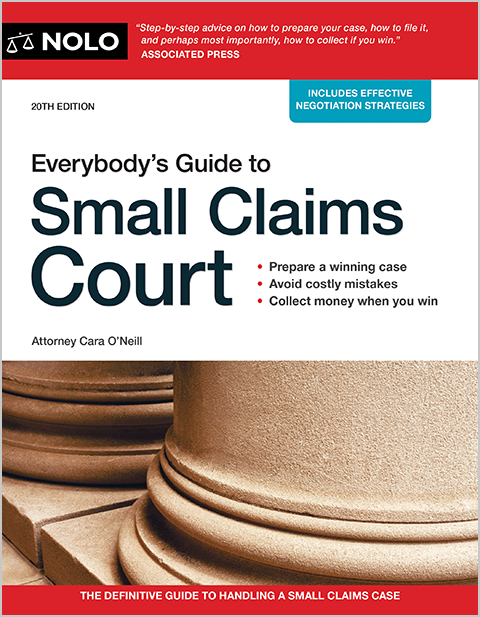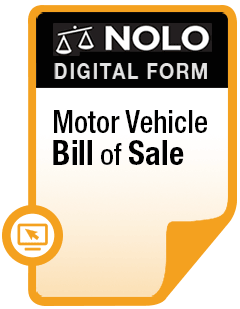Learn about Pennsylvania’s car accident lawsuit filing deadline, accident reporting and insurance requirements, and more.
If you've been involved in a traffic accident in Pennsylvania, you'll want to understand some of the state laws that could come into play for you, including:
- when you must report a car accident in Pennsylvania
- how Pennsylvania's auto insurance system works
- the deadline for filing a car accident lawsuit in Pennsylvania, and
- how Pennsylvania's shared fault rules works when both (or several) drivers are to blame for a crash.
Do I Need to Report My Pennsylvania Car Accident?
Under Pennsylvania law, you must report an accident to the nearest police department if the accident caused:
- any injury or death, or
- vehicle damage that incapacitated a vehicle or made it unsafe to drive from the scene.
(75 Pa. Cons. Stat. § 3746 (2025)).
If the police don't investigate the accident, you must complete a Driver's Accident Report Form and file it with the Pennsylvania Department of Transportation within five days of the accident. (75 Pa. Cons. Stat. § 3747 (2025)).
If the police did investigate your accident, you might want to get a copy of the police report. You can do that by making a Crash Report Request with the Pennsylvania State Police.
Is Pennsylvania a No-Fault Car Insurance State?
Pennsylvania is a "choice" no-fault car insurance state. When you buy auto insurance, you can choose between:
- a kind of no-fault insurance called "limited tort" coverage, or
- traditional fault-based insurance called "full tort" coverage.
Get the details on Pennsylvania's no-fault car insurance rules.
What Is the Pennsylvania Car Accident Statute of Limitations?
A "statute of limitations" is a law that sets a deadline on your right to file a lawsuit. If you try to file a lawsuit after the statute of limitations has expired, the court is almost certain to dismiss your case, unless some rare exception applies to extend the deadline.
Two-Year Statute of Limitations
In Pennsylvania, as in most states, the statute of limitations for a car accident lawsuit is the same as the general statute of limitations that applies to most personal injury cases. Specifically, the applicable law says that "an action to recover damages for injuries to the person or for the death of an individual caused by the wrongful act or neglect or unlawful violence or negligence of another" must be brought within two years. (42 Pa. Cons. Stat. § 5524(2) (2025)).
That's a long way of saying that, when a car accident occurs, if anyone was injured or killed—including a driver, passenger, motorcyclist, bicyclist, electric scooter rider, or pedestrian—any lawsuit over the accident must be filed within two years.
The same two-year deadline applies even if you're only suing for damage to your car. Learn more about property damage lawsuits in Pennsylvania.
When Does the Statute of Limitations "Clock" Start Running?
For an injury case not involving a death, the clock starts running on the date of the accident.
If the car accident caused someone's death, and a representative of the deceased person wants to bring a wrongful death lawsuit against the driver who caused the crash, the clock starts running on the date of the victim's death. That date might be different from the date of the accident. Get the details on Pennsylvania wrongful death claims.
What If I'm Partly at Fault for a Pennsylvania Car Accident?
When the other driver is entirely at fault for your car accident, the result is usually predictable. The other driver (through their auto insurance company) will pay for your medical bills, lost wages, and other accident-related losses. But what happens if you were partly at fault for the crash?
Pennsylvania's Modified Comparative Fault Rule
Pennsylvania follows a modified comparative fault rule when both (or several) parties are found to share blame for an accident. Under this modified comparative fault rule, your damages get reduced by a percentage equal to your share of the fault. In addition, if you're found to be more than 50% at fault for the accident, you can't collect any damages. (42 Pa. Cons. Stat. § 7102(a) (2025)).
Comparative Fault Example
For instance, suppose that a jury decides your total damages award should be $100,000 (including your medical bills, lost income, vehicle damage, and "pain and suffering"). But the jury also decides you were 40% responsible for the accident because you were speeding.
Under Pennsylvania's modified comparative fault rule, you're entitled to 60% of the $100,000 total damages, or $60,000. Had the jury found you were 50% to blame for the wreck, you'd collect $50,000 of your total damages. But if the jury found you to be 51% (or more) at fault, you'd collect nothing.
Can I Drive a "Salvage" Vehicle in Pennsylvania?
That depends on whether the vehicle has been "reconstructed." A Pennsylvania Certificate of Salvage will be issued for a vehicle that has been deemed a "total loss" by a car insurance company, usually because car accident damage made the vehicle non-repairable, considering its actual cash value and the cost to fix it. A Certificate of Salvage can also be issued because of flood/water damage, fire damage, or theft. In any case, this Certificate of Salvage identifies a vehicle that has been significantly (and sometimes irreparably) damaged.
A salvaged vehicle can be titled and registered as a Reconstructed vehicle in Pennsylvania (and driven legally) if it has been "restored to operating condition," according to the Pennsylvania Department of Transportation. All reconstructed vehicles must undergo an "enhanced vehicle safety inspection" at an approved inspection station before getting cleared. Learn more about Pennsylvania's Enhanced Vehicle Safety Inspection Program (from pa.gov).
Learn More and Get Help
If you've been involved in a car accident, you might need more than just information. There's no substitute for having an experienced car accident lawyer in your corner. The insurance company will have legal counsel on its side, and you should, too. Learn more about how a car accident lawyer can help with your case, and how to find the injury attorney who's right for you.
Have you been in a car accident?
Take our free car accident quiz to find out if you're likely to get a settlement.



